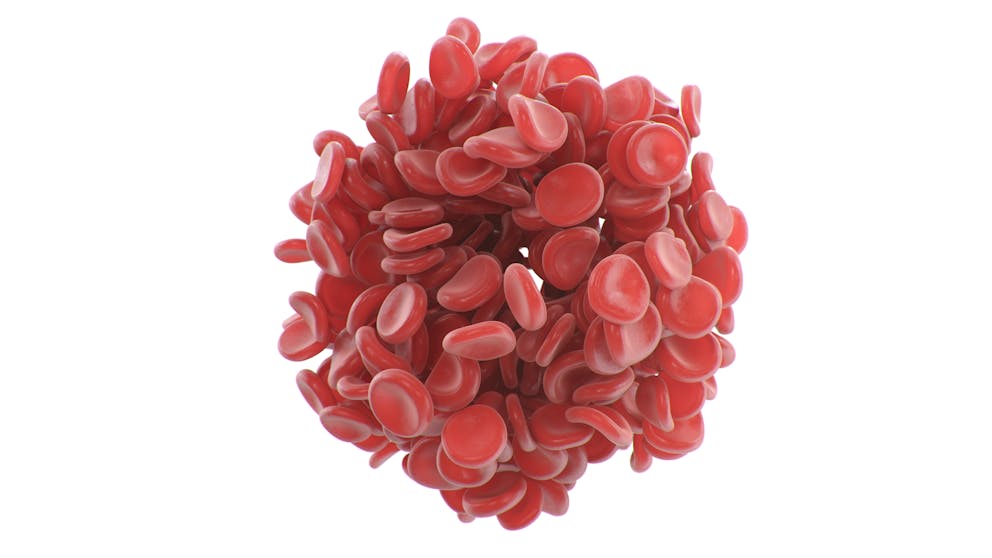What Does Pale Colored Stool Mean

How to Read Your Body
Learn to recognize common symptoms and uncover their underlying health issues
Understand the signs of nutrient deficiencies to manage your health
Explore the four metabolic body types and the core factors that influence them
Interpret your body's signals from head to toe to identify potential health concerns

How to Read Your Body
Learn to recognize common symptoms and uncover their underlying health issues
Understand the signs of nutrient deficiencies to manage your health
Explore the four metabolic body types and the core factors that influence them
Interpret your body's signals from head to toe to identify potential health concerns

How to Read Your Body
Learn to recognize common symptoms and uncover their underlying health issues
Understand the signs of nutrient deficiencies to manage your health
Explore the four metabolic body types and the core factors that influence them
Interpret your body's signals from head to toe to identify potential health concerns

How to Read Your Body
Learn to recognize common symptoms and uncover their underlying health issues
Understand the signs of nutrient deficiencies to manage your health
Explore the four metabolic body types and the core factors that influence them
Interpret your body's signals from head to toe to identify potential health concerns

How to Read Your Body
Learn to recognize common symptoms and uncover their underlying health issues
Understand the signs of nutrient deficiencies to manage your health
Explore the four metabolic body types and the core factors that influence them
Interpret your body's signals from head to toe to identify potential health concerns

How to Read Your Body
Learn to recognize common symptoms and uncover their underlying health issues
Understand the signs of nutrient deficiencies to manage your health
Explore the four metabolic body types and the core factors that influence them
Interpret your body's signals from head to toe to identify potential health concerns

How to Read Your Body
Learn to recognize common symptoms and uncover their underlying health issues
Understand the signs of nutrient deficiencies to manage your health
Explore the four metabolic body types and the core factors that influence them
Interpret your body's signals from head to toe to identify potential health concerns

How to Read Your Body
Learn to recognize common symptoms and uncover their underlying health issues
Understand the signs of nutrient deficiencies to manage your health
Explore the four metabolic body types and the core factors that influence them
Interpret your body's signals from head to toe to identify potential health concerns

How to Read Your Body
Learn to recognize common symptoms and uncover their underlying health issues
Understand the signs of nutrient deficiencies to manage your health
Explore the four metabolic body types and the core factors that influence them
Interpret your body's signals from head to toe to identify potential health concerns

How to Read Your Body
Learn to recognize common symptoms and uncover their underlying health issues
Understand the signs of nutrient deficiencies to manage your health
Explore the four metabolic body types and the core factors that influence them
Interpret your body's signals from head to toe to identify potential health concerns

How to Read Your Body
Learn to recognize common symptoms and uncover their underlying health issues
Understand the signs of nutrient deficiencies to manage your health
Explore the four metabolic body types and the core factors that influence them
Interpret your body's signals from head to toe to identify potential health concerns

How to Read Your Body
Learn to recognize common symptoms and uncover their underlying health issues
Understand the signs of nutrient deficiencies to manage your health
Explore the four metabolic body types and the core factors that influence them
Interpret your body's signals from head to toe to identify potential health concerns
Pale-Colored Stool Causes: Dietary Solutions and Prevention
When understanding pale-colored stool causes, one must delve into the intricate workings of our digestive system. The color of your stool is a crucial indicator of your overall digestive health and can signal potential issues within your gastrointestinal tract.
Learn about conditions such as liver disease or celiac disease that might disrupt this chain reaction, leading to pale stools. This disruption often results in high bilirubin levels, which can cause clay-colored stools and dark urine. Discuss symptoms like yellow skin or abdominal pain that could indicate possible liver damage or blockage in bile ducts, causing light-colored stools.
Understand dietary solutions and how they deal with pale-colored stool causes and can improve digestive health.
Breaking Down Hemoglobin: A Colorful Process
Hemoglobin breakdown is a complex process involving multiple organs and stages. Blood cells break down, and iron and heme separate. Heme then travels to the liver, transforming into biliverdin, giving our stools a distinct green color.

The Role of Heme in Blood Cell Breakdown
Heme is crucial in maintaining normal body functions, including digestion and waste elimination. In the liver, enzymes help heme transform into biliverdin, an essential step.
Transformation of Heme to Biliverdin
Liver enzymes help heme transform into biliverdin, which is crucial for maintaining normal body functions.
Excretion Process Involving Bile
Bilirubin gets excreted from the liver into the small intestine with bile's assistance for eventual elimination through stool. Stool color can indicate whether your digestive system is functioning optimally or not.
A healthy digestive system ensures no disruptions during these processes. Complications such as pale-colored stools are often indicative of potential health issues like blockages within your bile ducts or damage to your liver, preventing it from producing sufficient bile.
Why Pale-Colored Stool is a Big Deal
When your poop looks like it's been bleached, it's a sign that something's not right. It could indicate that the bile ducts are obstructed, or the liver isn't producing enough of this substance. This can lead to high levels of bilirubin, which not only affects your stool but also your urine color.
Possible Causes of Disrupted Hemoglobin Breakdown
Gallstones, cirrhosis, and pancreatic cancer are just a few things that can mess with your hemoglobin breakdown process.
How High Bilirubin Levels Affect Urine Color
Usually, bilirubin is processed by your liver and ends up in your poop, giving it the usual brown color. But when things go wrong, excess bilirubin can end up in your bloodstream, causing your urine to turn dark.
Be sure to seek a professional if you're experiencing symptoms like dark urine, poo-smelling like burnt hair, or pale-colored stool.
Symptoms of Liver Damage or Blockage
Don't ignore changes in stool color, especially if they're pale. It could be a sign of severe gastrointestinal disorders like liver disease or bile duct blockages. These conditions often come with other symptoms like jaundice, which turns your skin and eyes yellow.
Itchiness from Bile Backing Up
Another liver damage or blockage symptom is itchiness caused by bile backing up into the skin. Bile helps digest fats and remove toxins from our body, but if there's a blockage in your bile ducts, bile can get reabsorbed into your bloodstream and cause itching.
Pay Attention to Abdominal Pain and Dark Urine
If you experience abdominal pain along with dark urine and pale stools, seek medical assistance immediately. These symptoms could signal severe health issues requiring urgent care.
Early Detection is Key
Early detection of inflammatory bowel disease and celiac disease, which can cause clay-colored stools, is essential for improving prognosis. Don't delay seeking medical assistance if you observe any of these signs.
Dietary Solutions for Pale-Colored Stool
Your diet and digestive health are closely linked, so making intelligent food choices is essential.
Eat More Fiber
Fiber is one of the most important factors in keeping your stools healthy and regular. Cruciferous vegetables are a great option for introducing more fiber into your diet.
Stay Hydrated
Drinking plenty of water is another key to good digestion. It helps soften your stools and prevent issues like constipation and pale-coloring.
Try a Specific Diet
Some diets are perfect for your gut health. For example, the ketogenic diet and intermittent fasting have been shown to improve digestion and address underlying issues that can cause pale-colored stools.
Remember, what you eat matters. Making smart dietary choices allows you to keep your digestive system running smoothly and avoid issues like pale-colored stools.
Using Purified Bile Salts as a Remedy
Purified bile salts are a natural substance produced by your liver and stored in your gallbladder, playing a crucial role in digestion.
A disruption or blockage within the bile ducts, such as from gallstones or inflammation, could result in inadequate levels of bile being released into your small intestine during digestion.
Consequently, fat isn't broken down as efficiently, leading to pale-colored stools due to unprocessed fat content.
How do Purified Bile Salts Help?
Supplementing with purified bile salts can aid in the proper breakdown and absorption of dietary fats, helping to restore normal stool coloration and improve digestive function. In turn, this helps restore normal stool coloration while also improving overall digestive function.
Better Fat Digestion: Supplementing with purified bile salts provides additional assistance for breaking down dietary fats, promoting better nutrient absorption and healthier stool formation.
Liver Support: Purified bile salts may also support liver function given their crucial role in detoxification processes alongside the production and release of necessary substances like bilirubin, contributing towards optimal hemoglobin breakdown chain reaction.
Gallbladder Health: Regular intake might prevent the formation of gallstones since adequate amounts ensure cholesterol remains dissolved, preventing its accumulation and the formation of stones causing painful symptoms.
It's important to remember that not all cases require supplementation, so it's best to consult a healthcare provider before starting any new treatment regimen to ensure safety and effectiveness based on individual health needs and circumstances.

Healthy Keto and Intermittent Fasting: Fixing Your Diet
A high-fat, moderate-protein, and low-carb diet like the ketogenic (keto) plan can help regulate bile production and flow in the liver for improved digestion.
Using fats as the primary energy source, it regulates bile production and assists the liver, which is directly linked to stool color.
Keto Benefits for Digestion Improvement
A keto-friendly diet rich in healthy fats stimulates bile production, leading to better breakdown of fats during digestion and improved gut health. Plus, regular fat consumption ensures smooth bile flow, preventing blockages and pale-colored stools.
Research indicates that a keto-based regimen may also be effective in quelling gut inflammation.
Intermittent Fasting for Enhanced Digestive Health
Intermittent fasting is another way to support optimal digestion. By cycling between periods of eating and fasting, your digestive system gets regular breaks for vital processes like cellular repair and detoxification.
This aids in healing any damage or inflammation in the gastrointestinal tract and eliminates toxins, reducing the risk of developing conditions like leaky gut syndrome.
Conclusion
If you are experiencing pale-colored stools, this could mean your liver needs support.
Try a healthy keto diet or intermittent fasting, and consider combining this dietary change with purified bile salts for the best results.
Remember, taking care of your gut is critical to overall wellness.
Previous blog
How Much is Too Much CoffeeTags

Popular
08/21/2024
55.7K views
02/23/2025
46.8K views
11/18/2024
281.1K views
03/18/2024
11/21/2022




